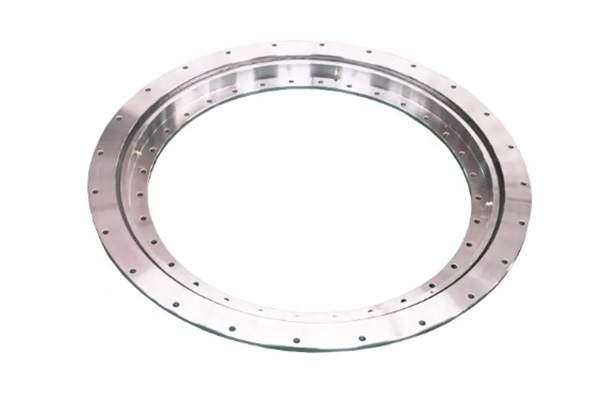
What is the Purpose of the Light Slewing Bearing?
2024-08-05
The light slewing bearing, a vital component in various mechanical systems, plays an indispensable role in modern engineering and machinery. This specialized bearing type is designed to handle axial, radial, and moment loads, providing rotational movement with minimal friction. Its unique construction and capabilities make it suitable for a wide range of applications. This article delves into the purpose and advantages of light slewing bearings, highlighting their significance in different industries.
Understanding Light Slewing Bearings
A slewing bearing, often referred to as a slewing ring, is a rotational rolling-element bearing that typically supports heavy but slow-turning or slow-oscillating loads. Unlike traditional bearings, slewing bearings can manage all three types of loads (axial, radial, and moment) simultaneously. Light slewing bearings are a specific category designed for applications where weight reduction and space saving are critical without compromising load-bearing capacity.
Key Features and Construction
Light slewing bearings are characterized by their compact design and lower weight compared to standard slewing bearings. They consist of:
- Inner and Outer Rings: These rings are designed to accommodate mounting holes, facilitating easy integration into machinery.
- Rolling Elements: Balls or rollers are placed between the rings to allow smooth rotational movement.
- Seals: These bearings often include seals to protect against contaminants and ensure longevity.
- Lubrication: Proper lubrication is essential to minimize friction and wear, enhancing the bearing’s lifespan.
The lightweight design makes these bearings ideal for applications where reducing the overall weight of the system is crucial.
Primary Purposes of Light Slewing Bearings
1. Space and Weight Efficiency
Light slewing bearings are designed to provide significant load-bearing capabilities while minimizing weight and space. This efficiency is critical in industries such as robotics, aerospace, and medical equipment, where every gram counts, and compact design is essential.
2. Enhanced Maneuverability
The reduced weight and compact size of light slewing bearings contribute to improved maneuverability and agility in machinery. This advantage is particularly beneficial in robotic arms and automated systems, where precise and quick movements are necessary.
3. Cost-Effectiveness
Light slewing bearings are often more cost-effective than their heavier counterparts. Their design allows for easier installation and integration into existing systems, reducing labor and material costs. This cost efficiency makes them an attractive option for manufacturers looking to balance performance with budget constraints.
4. Versatility in Applications
Light slewing bearings find use in a variety of applications, including:
- Robotics: Providing rotational movement for robotic arms and joints.
- Medical Devices: Enhancing the precision and reliability of surgical equipment and diagnostic machines.
- Aerospace: Contributing to the lightweight construction of aircraft components and satellite systems.
- Renewable Energy: Supporting the movement of solar panels and wind turbines, optimizing energy capture and efficiency.
Industry Applications
Robotics and Automation
In the field of robotics, light slewing bearings enable the smooth and precise movement of robotic arms, ensuring accurate positioning and operation. Their lightweight nature reduces the overall load on the system, enhancing the robot’s speed and efficiency.
Medical Equipment
Medical devices, such as imaging equipment and surgical robots, require components that provide precision and reliability. Light slewing bearings meet these requirements by offering smooth rotational movement and stable support, essential for accurate medical procedures.
Aerospace and Defense
The aerospace industry benefits from the reduced weight and high load-bearing capacity of light slewing bearings. These bearings are used in satellite positioning systems, aircraft components, and defense equipment, where performance and reliability are critical.
Renewable Energy Systems
In renewable energy applications, such as wind turbines and solar trackers, light slewing bearings facilitate the efficient capture of wind and solar energy by enabling the precise movement and alignment of panels and blades.
Conclusion
The purpose of light slewing bearings extends beyond merely supporting loads; they are designed to enhance efficiency, precision, and reliability across various industries. Their lightweight and compact design makes them ideal for applications where space and weight are critical factors. From robotics and medical equipment to aerospace and renewable energy, light slewing bearings play a pivotal role in advancing technology and improving operational efficiency. Their versatility and cost-effectiveness continue to drive innovation and development in multiple fields, underscoring their importance in modern engineering and manufacturing.






